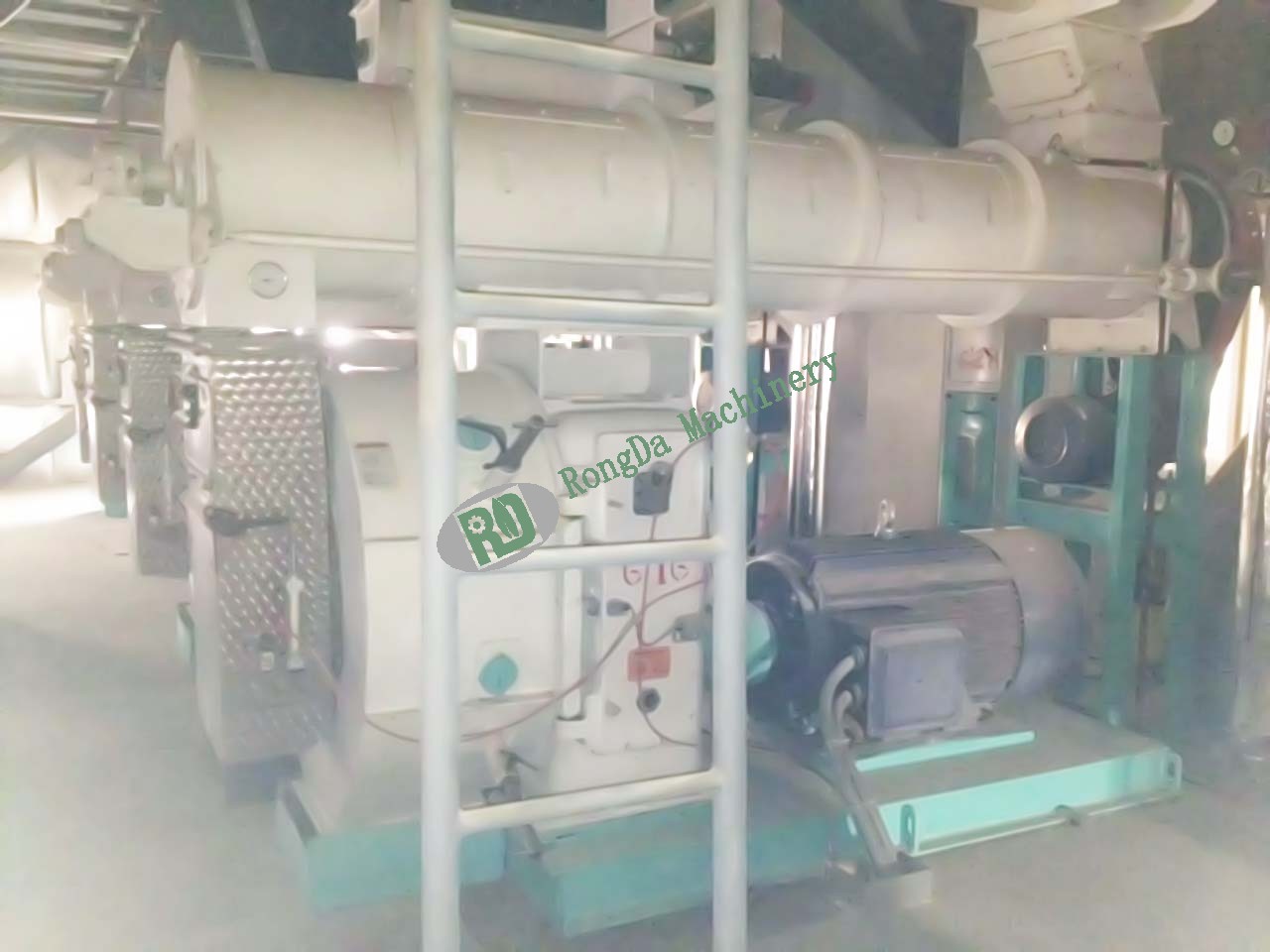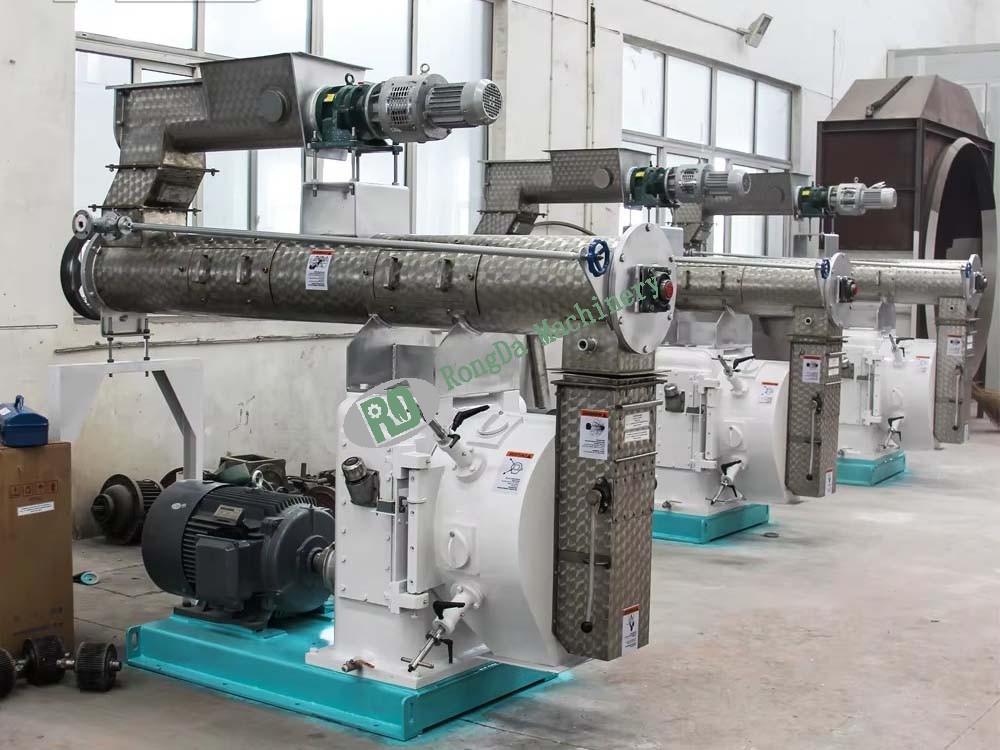Welcome to Rongda Machinery Co., Ltd
Toggle Navigation
Feed Pellet Machine: A Comprehensive Guide

Feeding animals isn’t just about tossing out grain—it’s about making sure they get the nutrition they need without breaking your budget. A feed pellet machine takes raw ingredients, like corn, soy, or fish meal, and transforms them into compact pellets that are easier to store, handle, and feed. These pellets lock in nutrient retention, meaning your cattle, poultry, or pets get every bit of goodness without waste. Plus, they last longer without spoiling, which is a lifesaver for anyone running a busy farm or pet food business.
Take Jake, a cattle farmer I heard about from a friend in Iowa. He was losing money on loose feed—about 30% was wasted to spillage or picky eaters. After switching to a feed pellet machine, he cut waste dramatically and saw his herd’s health improve. His profits? Up by nearly a third. Stories like Jake’s show how these machines aren’t just gadgets—they’re game-changers for efficiency.
Ever wonder how a pile of grains turns into perfect little pellets? It’s simpler than you’d think. The process starts with raw materials—think grains, proteins, or even organic blends—getting fed into the machine. Inside, they’re crushed and mixed (sometimes with a bit of heat to boost nutrient retention) before being extruded through a die to form those compact pellets. The result? Durable, nutrient-rich feed that’s ready for your animals.
The magic happens in the machine’s design, and there are a few types to choose from, each with its own strengths.
Not all feed pellet machines are created equal, and picking the right one depends on your operation. Here’s the rundown:
Hammer Mill Pellet Machines: These use spinning hammers to crush and mix materials. They’re great for smaller farms or businesses experimenting with different feeds. Think of them as the scrappy, versatile option for someone starting out.
Ring Die Pellet Machines: Built for bigger operations, these use rollers and a circular die to extrude feed at high speed. They’re efficient and perfect for medium to large-scale farms churning out tons of feed daily.
Flat Die Pellet Machines: These are the budget-friendly choice, with a simpler design that doesn’t skimp on quality. They’re ideal for small to medium farms needing flexibility without a massive upfront cost.
Each type has its quirks, so think about your scale—how much feed are you making, and for whom?

Feed pellet machines aren’t just for one type of farm—they’re versatile. For livestock like cattle, pigs, or chickens, pellets deliver balanced nutrition that boosts growth and health. Poultry farmers, for instance, have seen egg production jump by up to 20% with better feed conversion. Pet food makers use them to craft custom blends for dogs, cats, or even exotic pets, ensuring every bite is packed with goodness. And if you’re into niche markets, like organic or specialty feeds, these machines let you tailor pellets to exact nutritional needs.
Choosing a feed pellet machine isn’t like picking a new pair of boots—you’ve got to think it through. Here are some things to keep in mind:
Material Capacity: Can it handle the ingredients you use, like tough grains or high-protein mixes?
Production Scale: A small farm doesn’t need a beast of a machine built for industrial output. Match the size to your needs.
Automation: Want to save time? Automated models cut down on manual work, though they cost more upfront.
Energy Efficiency: Look for models that won’t send your electric bill through the roof.
The upfront cost can sting—anywhere from $5,000 to $50,000 depending on the model—but the savings pile up fast. Less waste, better feed efficiency, and happier animals add up to real dollars.
Why go for pellets? For one, they’re cost-effective, cutting down on feed waste and boosting how well animals use the nutrients. They’re easier to store and transport, too—no more lugging heavy, messy bags. And those pellets stay fresh longer, so you’re not tossing out spoiled feed.
But it’s not all smooth sailing. The machines aren’t cheap, and you’ll need to budget for regular maintenance to keep them humming. Also, the quality of your pellets depends on the raw materials—if you skimp there, you’ll see it in the results.
Feed pellet machines aren’t just tools—they’re a way to make your farm or business smarter, leaner, and more sustainable. Whether you’re feeding a herd of cattle, a flock of chickens, or crafting premium pet food, these machines deliver efficiency and quality. Sure, they come with challenges, like the initial cost or upkeep, but the payoff in healthier animals and lower costs is hard to beat. Ready to take the plunge? Check out models that fit your scale and start experimenting with pellets. Your animals (and your wallet) will thank you.
Got questions? You might be wondering how much maintenance these machines need—think regular cleaning and occasional part replacements, but nothing too daunting if you stay on top of it. Or maybe you’re curious about what materials work best—grains, proteins, and even organic blends are all fair game. Whatever your setup, a feed pellet machine could be the edge you need to grow smarter, not harder.